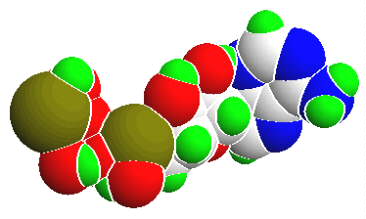
Botany online 1996-2004. No further update, only historical document of botanical science!

The reactions we discuss now take - with little variation - part in all known types of cells. This chapter focuses therefore not on a typical botanical topic, but is of general biological interest. The metabolism, that is, as you might recall, the sum of all biochemical processes, consists of both catabolic and anabolic processes. The term catabolism comprises all processes, in which complex molecules are broken down to simpler ones, while anabolism means any constructive metabolic process by which organisms convert substances into other components required for the organism's chemical architecture.
In this chapter, we will mainly concentrate on five points:
In order to perform biosynthetic processes, energy is required and has to be available in a suitable state (as delta G). In the last chapter, we showed that energy can be transferred by coupling an endergonic to an exergonic reaction. In this context, the hydrolytic breaking down of adenosine triphosphate (ATP) has a key position.
Another reaction that is coupled to quite a number of reactions is the uptake of hydrogen (protons and electrons):
H2 > 2H+ + 2e-. The most important acceptor of protons and electrons within a cell is nicotinamide adenine dinucleotide (NAD).
The best-known example of a catabolic process is glycolysis, the breaking-down of glucose. It precedes the citric acid cycle that functions in the cell's metabolism both as a distributor (a number of biosynthetic pathways start here) and to feed protons into the respiratory chain.
The respiratory chain establishes a connection between the break-down of molecules and the production of energy.
Finally, we will discuss some biosynthetic pathways specific for plant cells. Some of them show variations in different groups of organisms.
The best compilation of all biochemical pathways of plants, animals and micro-organisms has been published by Boehringer, Mannheim GmbH ('Biochemical Pathways'). Boehringer Mannheim GmbH, the university and the university hospital of Geneva have drawn up a digital version (project ExPASy) that can be found at:
The enzyme data base of ExPASy can be found at:
Another valuable source of metabolic pathways is the Kyoto Encyclopedia of Genes and Genomes (KEGG).
